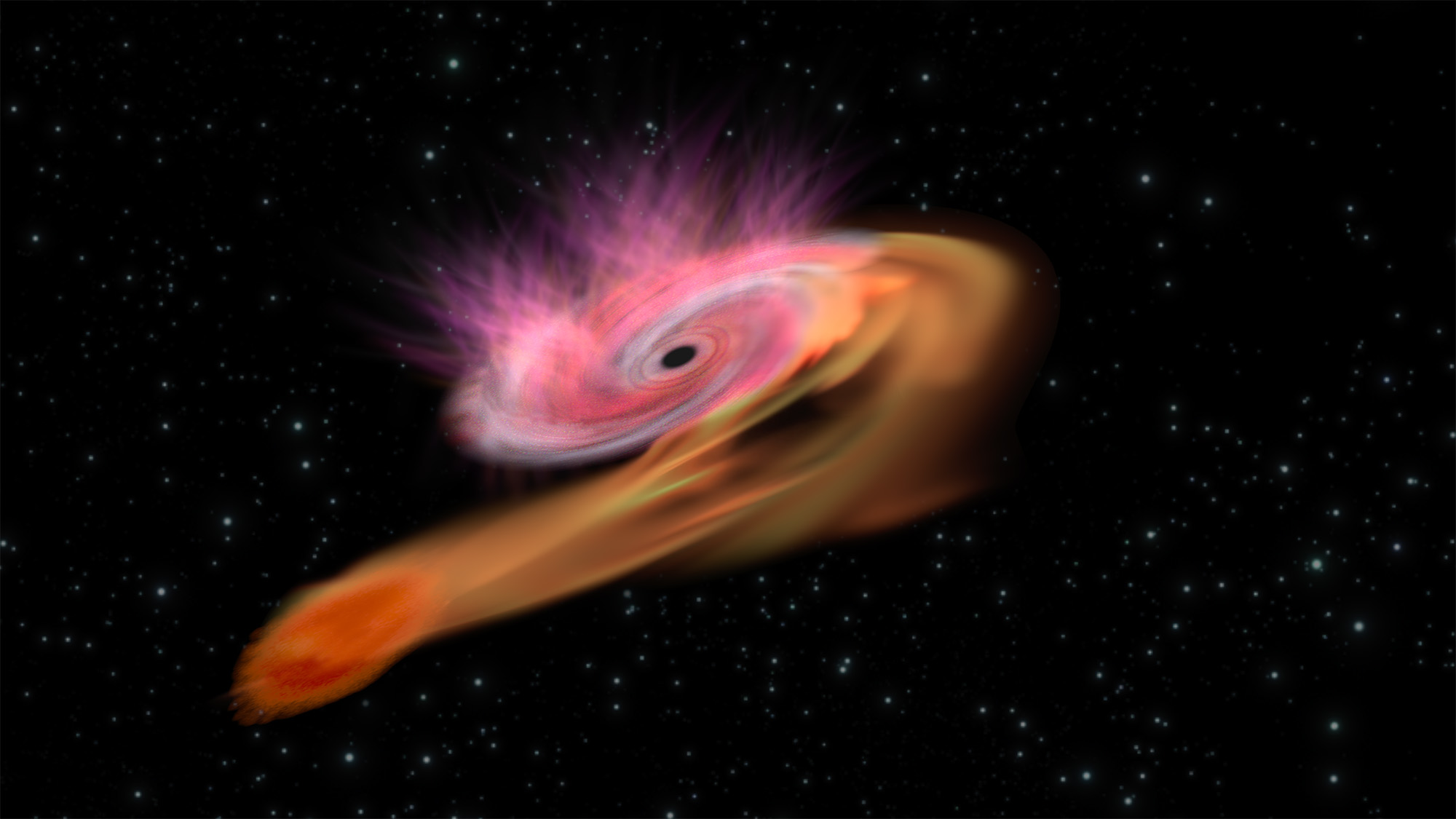
Scientists discover unique phenomenon: A star that 'survived' encounter with supermassive black hole
An international team of physicists has for the first time studied a unique phenomenon: tidal partial disruption when a massive black hole pulls a very close star toward it due to its gravity, causing the star to break into pieces—in the non-partial case, the black hole completely engulfs the star. In this case, the actual star "survived." Besides that, which is the most valuable, scientists have created a model for studying such phenomena.
As Sciencedaily.com informs, researchers from the European Southern Observatory, Syracuse University, and the Massachusetts Institute of Technology's Kavli Institute for Astrophysics and Space Research have published an article in The Astrophysical Journal Letters about the observation of the tidal disuption event, named AT2018fyk.
According to the study, in the beginning everything went as usual. An increase in brightness was recorded in the X-ray range, which gradually decreased and ended abruptly after 600 days—the material was torn away from the star and it accumulated on the black hole. However, after 1,200 days, the brightness of the star increased sharply again, which indicates that the phenomenon is repeated.
To date, scientists have not recorded a repeatable tidal extinction event in space, and have yet to find out how or if the process of a star orbiting a black hole can repeat itself.
The person behind this study, Thomas Wevers of the European Southern Observatory, said that being able to study the partial tidal extinction event provides unprecedented insight into the existence of supermassive black holes and the orbital dynamics of stars at the centers of galaxies.

Wevers also noted that until now it was believed that the consequences of such an event were fatal for the star, as it was completely destroyed.
“But contrary to all other TDEs we know of, when we pointed our telescopes to the same location again several years later, we found that it had re-brightened again. This led us to propose that rather than being fatal, part of the star survived the initial encounter and returned to the same location," he said, adding that the star would lose some more of its material in the same location during another tidal disruption event, which explains the re-brightening phase.
Syracuse University physicist Eric Coughlin explained that they estimate that 1-10% of a star's mass is lost each time it passes through a black hole.
"If the mass loss is only at the 1% level, then we expect the star to survive for many more encounters, whereas if it is closer to 10%, the star may have already been destroyed," he said.
The resulting data enabled the scientists to create and test on a simulator a repeatable model of a tidal destruction event. For astrophysics, this means specifying a number of physical characteristics of supermassive black holes, as well as their evolution scenarios.
Now, scientists plan to re-examine all previously recorded tidal extinction events to understand how widespread this phenomenon is.
- Related News
- "AMADEE-24" Mars Analog Research Mission in Armash came to an end
- NASA creates new generation solar sail: What is it for?
- Flying object resembling surfboard was detected in Moon’s orbit: What is it in fact?
- Total solar eclipse on April 8, 2024: The most impressive photos
- Total eclipse of Sun will take place today: From which parts of the country will it be seen?
- Amateur astronomer from Crimea discoves potentially dangerous asteroid for Earth
- Most read
month
week
day
- iPhone users are advised to disable iMessage: What risks are hidden in it? 1400
- New Macs based M4 chip will get up to 512 GB of integrated memory, M4 is expected to be released in late 2024 1145
- Problems with Android 15: NFC contactless payments no longer work on smartphones with updated operating systems 1091
- Pavel Durov gives interview to Tucker Carlson: From 3-hour interview, less than hour appears in final version 978
- What are the best selling smartphones in the world? 861
- AMD Ryzen 7 processor, 24 GB of RAM and only $550: Mechrevo presents inexpensive and powerful laptop (photo) 758
- Key Google Pixel feature will soon be available on iPhone as well 752
- The 5 most controversial buildings ever built: Bold design or complete failure? (photo) 750
- Wildberries Travel service is already available for Armenia and other CIS countries 737
- Black Shark smart ring from Xiaomi to have interesting characteristics and phenomenal autonomy: 180 days of operation without recharging (photo) 725
- Archive
